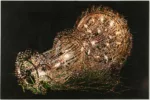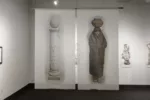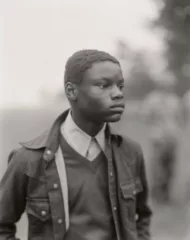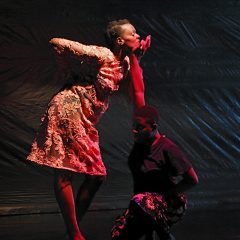Some years ago, American artist Danielle Voirin pondered her sex life without her hair. Overwhelmed with “curiosity” about being undisguised, she also wondered nervously that her “desirability as a woman may be compromised” without her sensual, feminine mane–a tree without leaves! Someone in winter! But the idea was too powerful to let go.
Letting go
Using a Phillips electric barbershop razor, the Paris-based photographer sheared off her hair, and in about 10 minutes discovered a different person, an echo of herself and a kind of walking metaphor–concentration camp refugee, punk rocker, cancer patient, a more androgynous version of herself. Soon afterwards, she recalls, people asked her if she was depressed.
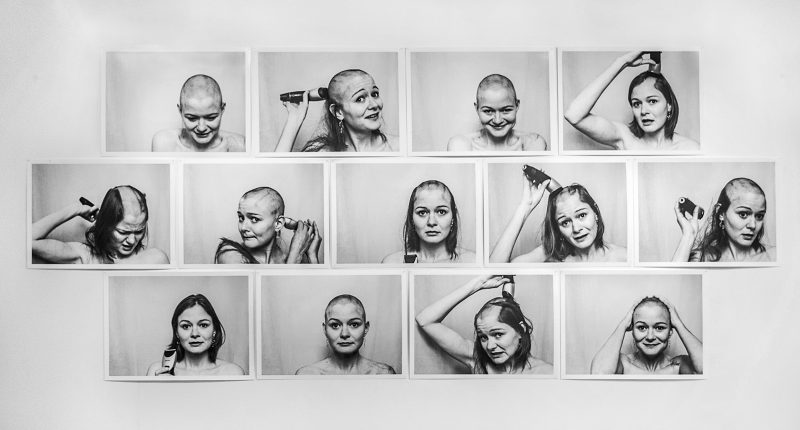
“Curiosity,” a wall installation comprised of 13 black-and-white self-portraits, captures the act of Voirin’s metamorphosis. Photographed dead on, alternately staring at the camera and wincing as the task proceeds, hair (and doubt?) falls on her naked shoulders. Her show Danielle Voit Rien (“Danielle sees nothing,” a play on Voirin’s last name), was exhibited in Paris at the Left Bank Gallery 21 in December; the 2010 “Curiosity” series is in an edition of 15.
The moments when the razor mows through her shock of hair, one can feel the palpable dread; there’s both willfulness and fear. The commitment to the project wavers, perhaps, even as her tresses fall away. But–no turning back.
If you knew nothing about the artist, the series might conjure up the full range of unease, and maybe that is part of the appeal of these photographs. No, she’s not cutting her flesh, pulling her own teeth, or committing suicide live on FaceBook. But neither is she opting for a fashion choice. Why do it, then?
Voirin, who has long photographed herself and her body, presents herself in a quiet fit of honesty. She is any woman becoming something else, someone else. It is hard not to study the process and invade her privacy. It is an intimate and public act, but a gratuitous one. It is however, an available, accessible one.
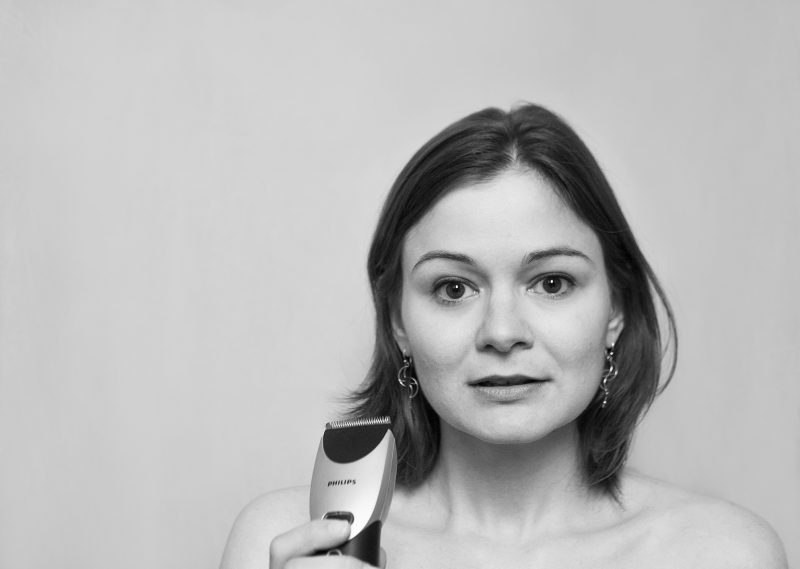
From woman to metaphor
Hair has always been political, a tool, a weapon, a weakness, a strength, a sign of beauty or lack thereof, as well as a sign of sickness, and maybe most of all an identity. Didn’t cavemen drag women about by their locks? Didn’t Rapunzel let down her golden hair to be rescued from her tower prison? Didn’t Delilah cut off Samson’s curls to weaken him? British judges wear wigs, as do cancer patients. Sinéad O’Conner famously shaved her head. Britney Spears, too. In the 1960s, the Rolling Stones were long-haired radicals, then the Beatles were, then we all were, then we were not. There were skinheads, then Nike logos and other declarations carved in a generation’s crewcut brush.
Art world hair, however, has a different history and it is entwined with body art. Cutting your hair as a contemporary artist isn’t like cutting your ear (Van Gogh), or nailing yourself to a Volkswagen (Chris Burden), or sucking out fat from your lips or legs (Orlan); rather, it’s a highly charged, highly visible form of identity. Serbian artist Tanja Ostojić, for example, shaved her entire body, covered herself in white marble dust and stood hairless and naked for hours on a square meter of the dust (Personal Space, 1996, Manifesta 2). That was an ode to Malevich. Without hair you are a canvas; you can be art, a metaphor.
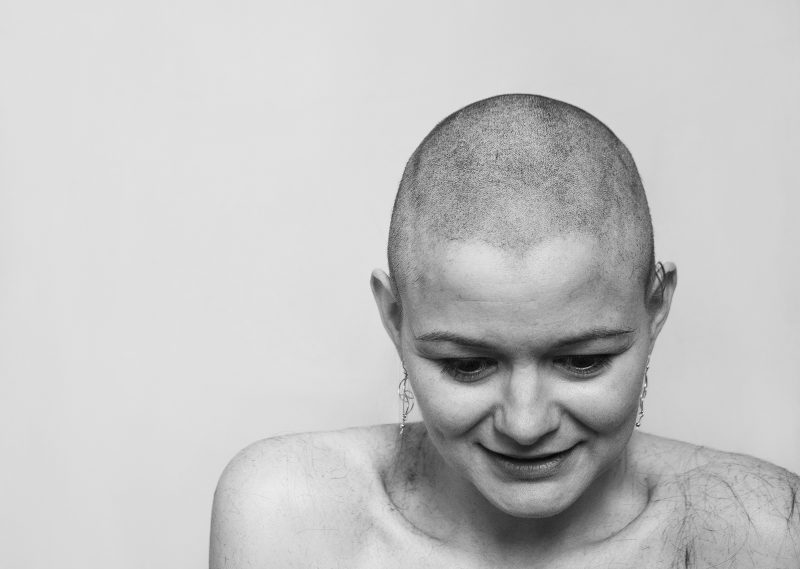
Voirin’s art piece is simpler, more personal, and ultimately more direct, and yet about the viewer. Shaving her head had to do with who she was and how she felt about who she was; what others thought about it and what she thought, in turn, about what these others ventured to say about her naked skull. In the series, one image speaks volumes about our vulnerability–she has finished cutting, and bits of hair are scattered on her shoulder; her head is a round sphere of stubble, her eyes are cast down. There’s a monk-like self-reconnaissance caught here. Voirin is a prisoner, like us, contemplating her/our condition.
See Voirin’s exhibition online and other works at http://www.danivoirin.com/


